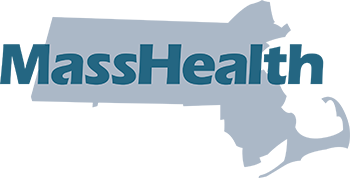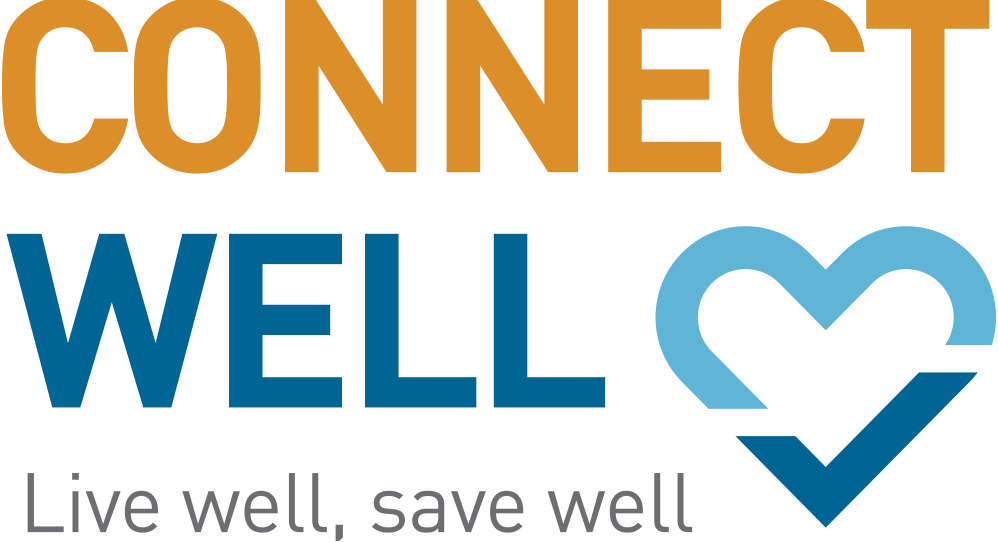Small Businesses Tools & Resources
Find useful information below for small businesses such as manuals, brochures, fact sheets, ConnectWell information, links to online resources, and more. Check back often for updates.
Health Connector for Business
Are you a small business owner with 50 employees or fewer? Learn more about Health Connector Business, your one-stop shopping solution for small businesses and brokers looking for affordable, high-quality health and dental insurance. Through the Health Connector, you can compare plans from leading insurance carriers side by side.
Save up to 15% with ConnectWell
ConnectWell offers you the opportunity to earn a rebate of up to 15% on your premium contribution by promoting a healthy workforce. Learn more →
ACA Marketplace Notification Template for Massachusetts Employers
As you may know, the new national health care reform law (the Patient Protection and Affordable Care Act or ACA) requires employers to issue a Marketplace Notification to current employees to new hires within 14 days of the employee’s start date.
The purpose of this requirement is to help employees understand health insurance Marketplaces, which are designed to make it easier for consumers to compare health insurance plans and enroll in coverage. In Massachusetts, the state Marketplace is known as the Massachusetts Health Connector. Read more and download the templates →
Employer Frequently Asked Questions
This information does not, and is not intended to, provide legal, tax, or accounting advice to employers. The information provided here is general in nature and based on authorities that are subject to change. Readers should consult with their tax advisers concerning the application of tax laws to their particular situations.
Employer Requirements Related to Health Coverage
Am I required to offer health insurance?
The Affordable Care Act requires certain large employers to offer health coverage that meets standards or pay a penalty if their employees access publicly-subsidized coverage through Exchanges, including the Massachusetts Health Connector. This requirement is known as the “employer shared responsibility” provision of the ACA, or sometimes as the “employer mandate.” Only “applicable large employers” (ALEs) are subject to the employer shared responsibility provisions and the employer information reporting provisions. Whether an employer is an ALE is determined each calendar year and based on the average size of an employer’s workforce during that prior year. For information about determining whether your business is an applicable large employer (ALE), please see “How do I count my employees to see if I am required to offer insurance?”.
Note: Massachusetts state law used to include a state employer shared responsibility program known as the Massachusetts Fair Share Contribution (FSC) requirement. The state employer contribution was repealed in 2013.
How do I count my employees to see if I am required to offer insurance?
The IRS provides details and examples regarding how employers should count employees for the purposes of determining if they are an Applicable Large Employers (or ALE). Generally, if an employer has at least 50 full-time equivalent (FTE) employees, including part-time workers, on average in the prior year, the employer is an ALE for the current calendar year and is required to offer insurance to employees or risk paying a penalty.
There are special counting rules for certain types of employees when determining an employer’s FTE count. For example, Part-time employees, defined as employees who worked on average less than 30 hours per week, but more than 120 days per year, are included in the employee calculation to determine ALE status. By contrast, Seasonal Employees and Seasonal Workers are generally not included in an employer’s FTE count, but you should consult the IRS specific rules that apply to these and other types of employees before performing FTE calculations.
An employer can determine their number of FTEs by adding their monthly number of full-time employees (# of employees that worked at least 130 hours during the month) and their monthly number of FTEs (# of total hours worked by all other employees/120). Monthly full-time employees and FTEs should be added up for all months and divided by 12.
For assistance with detailed calculations, please see the federal government’s Small Business Health Options Program (SHOP) calculator or IRS guidance.
Under what circumstances would an Applicable Large Employer (ALE) be subject to an employer shared responsibility payment?
The Affordable Care Act’s employer shared responsibility provisions, sometimes known as the employer mandate, requires Applicable Large Employers (ALEs) to pay a penalty if the employer:
- fails to offer minimum essential coverage to at least 95 percent of full-time employees and at least 1 full-time employee receives a premium tax credit for individual coverage through the Health Connector or another Marketplace; or
- fails to offer minimum essential coverage that meets federal standards for affordability and minimum value and at least one employee receives premium tax credits for individual coverage through the Health Connector or another Marketplace.
An ALE subject to the penalty may need to make a payment to the IRS for each full-time employee who receives a premium tax credit for purchasing coverage through the Health Connector or other Marketplace. Two types of enrollees receive premium tax credits through the Massachusetts Health Connector: ConnectorCare enrollees (less than 300 percent the Federal Poverty Level or FPL) receive both state subsidies and premium tax credits and some enrollees only receive premium tax credits (300 percent–400 percent FPL).
Employer sponsored coverage is considered affordable if the portion of the annual premium an employee must pay for self-only coverage does not exceed the annually adjusted percentage of household income set by the IRS (9.5 percent of income, as indexed annually for inflation). Employer sponsored coverage is considered minimum value if the plan covers at least 60 percent of the total allowed cost of benefits expected to be incurred under the plan. The plan also must provide substantial coverage of in-patient hospitalization and physician services.
The IRS’s Taxpayer Advocate Service offers an Employer Shared Responsibility estimator to help employers determine whether they are an ALE subject to the employer mandate and what their maximum employer shared responsibility payment might be if they do not offer coverage to their full-time employees. For more information about how penalties are calculated for applicable large employers, please visit the IRS webpage on Employer Shared Responsibility payments.
How would an employer know if they were assessed by the IRS under the Employer Shared Responsibility Provisions?
The IRS handles all administration of the Employer Shared Responsibility Provision. Please visit the IRS website for more information.
I am a large employer subject to the federal employer mandate. How can I find out if my employees received subsidized Health Connector coverage?
If you would like the Health Connector to send you information to learn if one or more of your employees have received or are receiving premium tax credits in Massachusetts, please fill out and submit the Health Connector’s employer shared responsibility notice request form. This notice is for informational purposes only. The Health Connector will not make an assessment against your company even if there is a match. In addition, if you receive this notice, it does not mean that the IRS is making an assessment against you. If the IRS does assess you in the future, it will provide separate notice. If you have any questions about the Health Connector-generated notice, please send an email to [email protected].
I am a large employer subject to the federal employer mandate. If I received a notice from the Health Connector indicating that an employee is receiving premium tax credits but have questions, what can I do?
Employers may get a notice from the Massachusetts Health Connector stating they may be subject to the Employer Shared Responsibility Payment because one of their employees is receiving premium tax credits (please see question above regarding how to find out if your employees are receiving subsidized Health Connector coverage). In response to this notice, employers can appeal if they believe they offered coverage to an employee that is both affordable and that meets minimum value standards. This appeal is not an appeal of a potential penalty payment by the IRS; only the IRS can determine which employers are subject to the penalty. The appeal is simply an appeal of the information provided by the Health Connector.
For instructions on how to appeal the information about whether your coverage is affordable and minimum value with respect to a particular employee that received subsidies through the Massachusetts Health Connector, please visit healthcare.gov.
In addition, if subject to an IRS penalty, employers can appeal the penalty with the IRS. Letter 226-J is the initial letter issued to Applicable Large Employers (ALEs) to notify them that they may be liable for a penalty. If you disagree with the proposed penalty, you can provide a full explanation of your disagreement and/or indicate changes that are necessary. Please follow instructions from the IRS if you want to contest any information about your employees receiving subsidies or appeal a decision.
What are the reporting requirements for applicable large employers (ALE) that are subject to the Employer Shared Responsibility provisions?
Applicable large employers (ALE) must report to the IRS information about the health care coverage, if any, they offered to full-time employees. The IRS will use this information to administer the employer shared responsibility provisions and identify the availability of the premium tax credit to employees who claim it. ALEs also must give employees a statement that includes the same information provided to the IRS. Employees may use this information to determine whether, for each month of the calendar year, they may claim the premium tax credit on their individual income tax returns. For additional details regarding how to report employer health coverage information to the IRS, please visit the IRS webpage regarding large employer reporting requirements.
Other Employer Impacts if Employees Participate in Subsidized Health Programs
If I offer coverage to my employees, can my employees choose to stay on MassHealth?
There are no federal penalty assessments for having employees (full-time or otherwise) on MassHealth coverage. The federal penalty assessment for large employers is only triggered by utilization of federal premium tax credits by full-time employees purchasing coverage in the Marketplace.
If you offer coverage, employees who currently have MassHealth coverage may be eligible for the MassHealth Premium Assistance Program, which helps an employee pay for all or a portion of their employer-sponsored health insurance premium. If MassHealth-eligible employees waive out of your employer sponsored insurance and enroll in MassHealth, the Premium Assistance program may contact you to coordinate their enrollment in your coverage if MassHealth determines that they are eligible for the MassHealth Premium Assistance Program.
The Premium Assistance Program helps to pay for the employee share of the monthly health insurance premiums deducted from their pay check by their employer. Premium assistance reimbursements are provided directly to the employee. MassHealth may also assist with other out-of-pocket costs such as co-payments, deductibles, and co-insurance.
If I offer coverage to my employees, can my employees choose to stay on subsidized Health Connector coverage instead?
An employee is not eligible to receive subsidies through the Health Connector if their employer sponsored coverage is considered affordable (according to a federal definition) and provides minimum value coverage. Employer sponsored coverage is considered affordable if the portion of the annual premium you must pay for self-only coverage does not exceed the annually adjusted percentage of household income set by the IRS (9.5 percent of income, as indexed annually for inflation). Employer sponsored coverage is considered minimum value if the plan covers at least 60 percent of the total allowed cost of benefits expected to be incurred under the plan. The plan also must provide substantial coverage of in-patient hospitalization and physician services.
For more information on what constitutes affordable and minimum value coverage, please visit the IRS.
Employer Noticing and Reporting Requirements Related to Health Coverage
What is the Marketplace Notice requirement and who is required to send the Marketplace Notice to their employees?
Federal law requires certain employers to issue a Marketplace Notification to a new hire within 14 days of the employee’s start date. Businesses covered by the Fair Labor Standards Act are required to provide the Marketplace Notice to new employees. The purpose of this requirement is to help employees understand their state health insurance Marketplace. Specifically, the notice should inform employees:
- About the health insurance Marketplace;
- That, depending on income and employer offered coverage, they may be able to get lower cost private insurance in the Marketplace; and
- That if they buy insurance through the Marketplace, they may lose the employer contribution (if any) to their health benefits.
Please see the Health Connector’s Marketplace Notice for employers to share (available in English and Spanish).
What is the Health Insurance Responsibility Disclosure (HIRD) form?
The Health Insurance Responsibility Disclosure (HIRD) form is a state reporting requirement in Massachusetts, which launched in 2018. The HIRD form collects employer-level information about your employer-sponsored insurance (ESI) offerings. HIRD reporting is administered by MassHealth and the Department of Revenue (DOR) through the MassTaxConnect web portal. The HIRD form will assist MassHealth in identifying its members with access to qualifying ESI who may be eligible for the MassHealth Premium Assistance Program. For information about the HIRD form, please visit the HIRD FAQ webpage.
What is the difference between the old and new Health Insurance Responsibility Disclosure (HIRD) Requirement and who is required to complete the new HIRD form?
The new HIRD requirement is different from the old HIRD requirement that was passed into law in 2006, and later repealed in 2014. The old HIRD requirements consisted of an employer form and employee forms; separate employee forms were required to be completed and signed by each employee who declined to enroll in employer sponsored insurance (“ESI”) or the employer’s Section 125 Cafeteria Plan to pay for health insurance. In contrast, the new HIRD form consists of a single employer form, which only needs to be completed once annually for your company.
The new HIRD form does not contain any personal information about your employees and will be used to inform MassHealth about employers’ ESI offerings and allow more MassHealth members to enroll in Premium Assistance.
How do I get help with the Health Insurance Responsibility Disclosure (HIRD) form?
To receive assistance regarding the HIRD form, you can contact the HIRD information line at 617-466-3940.
What are employers’ reporting requirements related to the Employer Medical Assistance Contribution (EMAC)?
Each quarter, employers with Massachusetts employees must submit an employment and wage detail report to the Department of Unemployment Assistance. This information helps to calculate the balance due for EMAC. Get more information about EMAC and reporting requirements →
Other Options for Employers to Contribute to Employee Health Coverage
Can employers contribute to non-group (individual) coverage for their employees?
Yes, small employers may offer a Qualified Small Employer Health Reimbursement Account (QSEHRA) to their employees to help them pay for individual coverage as of 2016 and employers of any size may offer an Individual Coverage Health Reimbursement Arrangement (ICHRA) as of January 1, 2020. It’s important to know that when your employee applies for coverage through the Health Connector, the Health Connector won’t have information about the Individual Coverage HRA or QSEHRA that the employee has been offered. This means that the tax credit amount shown on an employee’s Health Connector eligibility notice or account won’t account for their HRA benefit. As a result, employees offered an Individual Coverage HRA or QSEHRA could receive subsidies in error and have to repay them upon tax filing. Please see the questions and answers below regarding QSEHRAs and ICHRAs for more information about these employer options.
(Note: Due to a federal law change that took effect in 2014, Massachusetts employers can no longer use Section 125 premium-only plans to help their non-benefits-eligible employees access tax-preferred individual coverage through the Health Connector. Please see the Health Connector’s Administrative Bulletin for more information).
A QSEHRA is a type of tax-preferred arrangement that small employers can use to help their employees pay for medical expenses, such as monthly health insurance premiums or out-of-pocket expenses for health care. A QSEHRA is different from a Health Savings Account or a typical Health Reimbursement Arrangement and does not have to be paired with a health insurance plan offered by an employer. If you provide a QSEHRA to your employees, employees can use it to help pay their monthly premiums for a non-group health plan purchased through the Health Connector.
Employers offering a QSEHRA should consider the full financial impact it could have on their employees’ premium costs. While QSEHRAs can help reduce employees’ health care costs, QSEHRAs may increase health care costs for some employees who purchase individual health plan coverage through the Health Connector and receive premium tax credit or ConnectorCare financial assistance.
Under federal tax law, employees cannot get both a QSEHRA benefit from their employer and a full premium tax credit through the Health Connector. If an employee qualifies for a premium tax credit through the Health Connector, and their employer offers a QSEHRA benefit (even if the employee does not use it), the employee’s premium tax credit amount will be reduced or eliminated by the federal government when they file taxes and the employee will have to pay the federal government back either some or all of their premium tax credit amount.
The IRS can provide additional information regarding QSEHRAs and tax questions. Please see IRS Publication 974 or call the IRS at 1-800-829-1040, Monday–Friday, 7:00 a.m.–7:00 p.m.
What kind of coverage can my employee buy with their QSEHRA?
Employees (and their family members, if applicable) must be enrolled in minimum essential coverage for each month they (or their family members) are covered by the Qualified Small Employer Health Reimbursement Account (QSEHRA). Employees may not use QSEHRAs with more limited coverage like a short-term limited-duration plan, plans that only cover “excepted benefits” (for example, a dental- or vision-only plan), or a health care sharing ministry. It’s also important to make sure that the coverage an employee chooses satisfies the individual mandate in Massachusetts.
What is an Individual Coverage Health Reimbursement Arrangement (ICHRA)?
As of January 2020, a federal rule allows employers to offer Health Reimbursement Arrangements (HRAs) used to fund individual health insurance coverage costs. An individual coverage HRA is different from a Health Savings Account or a typical Health Reimbursement Arrangement and does not have to be paired with a health insurance plan offered by an employer. If an employer offers an HRA that is integrated with individual health insurance coverage to employees, employees can use it to help pay their monthly premiums for a non-group health plan. While Individual Coverage HRAs can help reduce employees’ health care costs, this option may increase health care costs for some employees who purchase individual health plan coverage through the Health Connector and currently receive premium tax credits or ConnectorCare financial assistance. This is because being offered an Individual Coverage HRA may prohibit an employee from receiving premium tax credits they would otherwise be eligible for.
Since offering an HRA under the new rule has the potential to result in decreased affordability for some employees (if their HRA contribution is more modest than the amount of premium tax credits the employee would have received without the ICHRA), employers should consider the full financial impact of offering an ICHRA.
The IRS can provide employers with additional information regarding Individual Coverage HRAs and tax questions. Please see the IRS Individual Coverage HRA webpage or call the IRS at 1-800-829-1040, Monday–Friday, 7:00 a.m.–7:00 p.m.
What kind of coverage can my employee buy with their Individual Coverage HRA?
To use the Individual Coverage Health Reimbursement Arrangement (HRA), an employee–and their family members, if applicable–must be enrolled in ACA-compliant individual health insurance coverage or Medicare for each month they (or their family members) are covered by the HRA. “ACA-compliant” means that the coverage satisfies the Affordable Care Act’s requirements related to preexisting conditions, covered benefits, and coverage limits.
Employees may not use Individual Coverage HRAs with more limited coverage like a short-term limited-duration plan, plans that only cover “excepted benefits” (for example, a dental- or vision-only plan), or a health care sharing ministry. It’s also important to make sure that the coverage an employee chooses satisfies the individual mandate in Massachusetts.
In addition, employees offered an Individual Coverage HRA along with a salary reduction agreement (also referred to as a “cafeteria plan” or a “section 125 plan”) must enroll in off-Exchange coverage to use the two together.
If I offer a special type of HRA, how should I inform employees?
Federal law requires employers offering Health Reimbursement Arrangements (HRAs) to provide their employees with a clear explanation of its terms and associated rules. The federal government released a model notice that may be used. Employers should ensure that the notice they provide includes all relevant information for employees.
Additional Information and Resources for Employers
Health Care Requirements for Employers
Health Connector for Business Policies
COBRA and Mini-Cobra Resources:
- Department of Labor information on Continuation of Health Coverage – COBRA
- Massachusetts Division of Insurance MiniCobra Continuation of Coverage Benefits Guide
- Health Connector COBRA Election Notice and Form Template
Health Insurance Responsibility Disclosure (HIRD)
Options for your employees not eligible for employer health coverage
Questions? Contact Customer Service
1-888-813-9220 (TTY: 1-888-213-8163)








